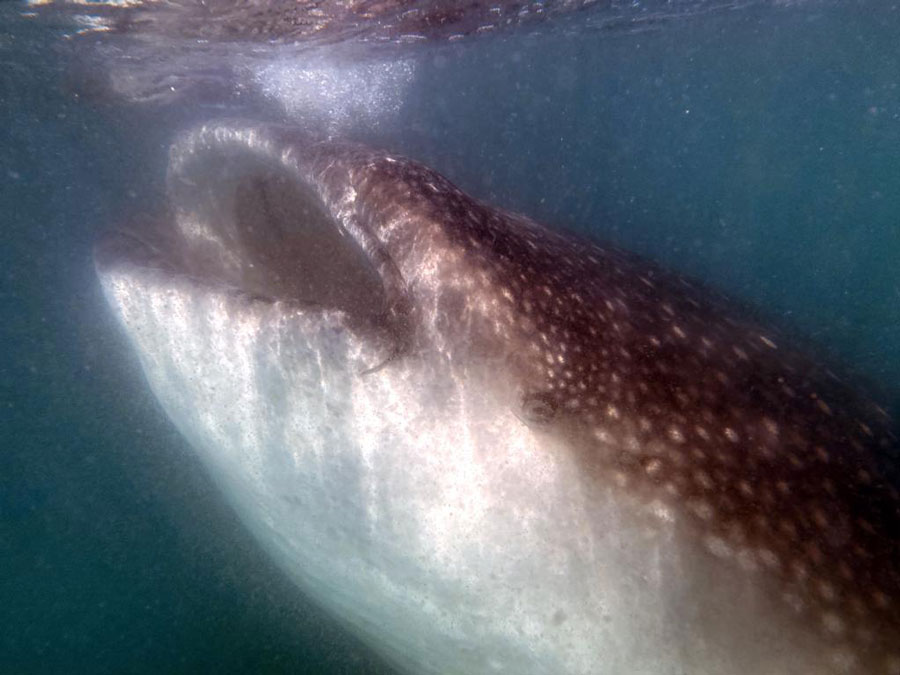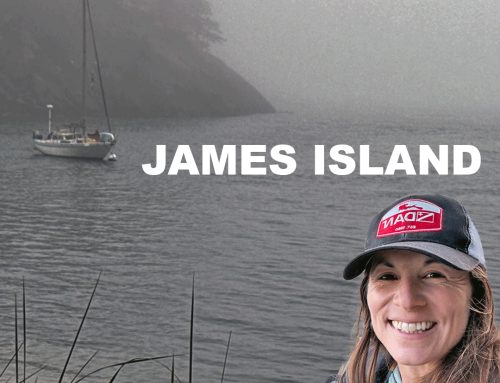Returning to Komodo after losing my business
The anticipation of going back to Komodo had me feeling a wide range of emotions. On one side, excitement of diving with my group for the KOMODO DIVE EXPEDITION. On the other, dread, as if I were going right into the belly of the beast. 3 years ago, I left this place, thinking I would never be back. I got on a plane back to the states with a broken heart and a “normal job.”
But here I am… and I chose to come here.
I experienced a lot of extremes while living here, so to say this place is triggering for me is a bit of an understatement. I hit my bottom here, which finally got sober. I rode the waves of business ownership in a foreign country. I somehow survived the emotional and financial disaster of the onset of the pandemic while living like a feral woman on a deserted island, but that story is for another episode. Thinking back on it now feels a bit like a fever dream.
Getting to Labuan Bajo & things to know
Flying here from Bali or Jakarta is really simple and the airport is only a 5 minute taxi ride down the hill.
In general, Labuan Bajo is getting more popular. I think the over-saturation of Bali is convincing people to check out different parts of Indonesia. The increased infrastructure in Labuan Bajo makes this place more appealing. We used to call this place a dusty, strange little town, and while it’s still strange, the sidewalks and new buildings have decreased the amount of sediment in the air.
I think it’s still too strange for the Bali influencer crowd to try to take up residence here anytime soon. The town would need to put in some yoga studios, health food stores, and live music venues, so I think it’s safe for a few more years.
That being said, Labuan Bajo is way more expensive than it was 4 years ago. Accommodation, food, everything.
The cultural experience is also nuanced here because it is about a 50/50 split between Muslims and Christians. The call to prayer rings through loudspeakers 5 times a day, and you’ll see different businesses decorate for holidays like Christmas.
If you visit, be curious. Ask about traditions. I truly believe the growth we do while traveling comes from being open to different cultures, points of view, and ways of living.
Sailing into the Komodo National Park
Sailing into the Komodo National Park made my soul happy and diving off my boat, seeing old friends, was one of the best feelings in the world. There are very few ‘things’ in my life that I am attached to, but Asmara and the dream she represented have a special place in my heart. I’m grateful for the care the owners have put into the boat and shop, making it their own.
Facing the fear of scuba diving in strong currents
So what is it about the obsession with the Komodo National Park?
Komodo’s claim to fame are the Komodo dragons, the beautiful reefs, and of course, the strong currents.
A couple of the divers in my group expressed anxiety about currents and their fear is not without its roots in reality.
We did a lot of diving on this trip, so it was inevitable that we’d have a hairy moment or two in and out of the water. The great thing about traveling in a group is the support and camaraderie you build in your dive team during the trip. Now, I won’t share the stories of how these moments in the water made other divers feel, but I will say that it is very common to have people cry on boats in Komodo. The currents can be overwhelming and scary, but something I love about this place is the opportunity for growth.
We can work through the big feelings, talk about what happened, give tips, and get back out there. Although a couple of the dives were intense, our group actually had the most issues on the boat.
Accidents and quick reaction times
We, unfortunately, had a couple of small accidents during this trip. I go into details about them in a Patreon video, but the biggest takeaways are these: be careful walking around boats with heavy gear (or better yet, ask for help moving gear), brace yourself in choppy water, and… don’t go too hard with your favorite dance moves.
Also, it is worth the time and money to get properly trained in rescue response. It can be as simple as signing up for your EFR and Rescue courses through PADI or another scuba diving agency. Reach out to me about training.
In the situations onboard, I have to say that diving sidemount actually gave me an advantage in response time. While everyone else was kitted up with a tank on their back, I was only in my harness and could move quickly to help the divers in need.
Choosing dive sites and dive plan switching
Dive planning in a place with strong currents can be confusing for people. Sometimes you make all the plans, but when you check the current, you realize the plan isn’t going to work.
Sometimes you look at the tide charts, make a plan, and everything goes perfectly. Then, there are other dives where everything seems to be going according to the plan, but conditions change and the guide has to make decisions. As a dive guide, you have to think on your feet.
Where is it safe? How do I explain dive plan changes to my group?
Some divers have a hard time with adjusting the plan on the fly. Diving in places like Komodo is a lesson in letting go of expectations, being present, and enjoying what’s in front of you.
If the plan was to go around around the rock, but it’s not possible… now we’re looking for small stuff in the protected area of the dive site. If current is coming from every direction… now we’re staying put (or slowly make progress in one direction), taking in the sensation of the current until we abort or finish the dive. The goal is to enjoy the ride, but you should also feel empowered to cancel the dive if the conditions are overwhelming.
Favorite moment of the trip
Hands down, the funniest moment of the trip, and I didn’t catch it on camera was while flying in the The Cauldron.
The Cauldron is located between two islands where the current gets channeled through the bowl-shaped namesake and rips people out through a spot called the shotgun. It sounds a lot scarier than it actually is.
We deflated as we approached the shotgun, which takes you from about 16m up to 6m in one fail swoop. Once we reached the ledge, we hooked in with a strong current ripping around us, taking in the view. When I told the diver to unhook and follow the group, she told me no.
I could hear what was going on in her head, “I live here now. Leave me be.” It made me chuckle.
But obviously I didn’t leave her there. We let go and everything was fine. There were no up or down currents, just a strong, consistent current we had to cross in order to reach the end location, a calm, protected coral garden. It was one of those dives that really brings a dive team together, and I’m so proud of how people handled themselves.
The last dive of the KOMODO DIVE EXPEDITION
The last dive of the trip was pure joy. I felt light as we drifted through one of my favorite dive sites Tatawa Besar. A wave of gratitude hit me as I thought about the growth I experienced both professionally as a business owner and instructor, and personally through my recovery journey. It felt like my heart was bursting as we played and laughed underwater.
People kept asking me if I will be running another KOMODO DIVE EXPEDITION, and my answer at this point is… not anytime soon. I am grateful for this place and this experience, but I have other plans for the next couple of years. Indonesia is far away from my home base, and these days, I’m much more interested in slow travel with my dog, especially since she’s 13. That said, I’ll leave a window of possibility open for a future KOMODO DIVE EXPEDITION, if people show interest in it.
Join me on upcoming Azul Unlimited dive expeditions
See what trips are coming up. I always give my community first dibs on spots, so you can sign up for Patreon (and get trip discounts) or my email list to be the first to know about new expeditions in the future.










